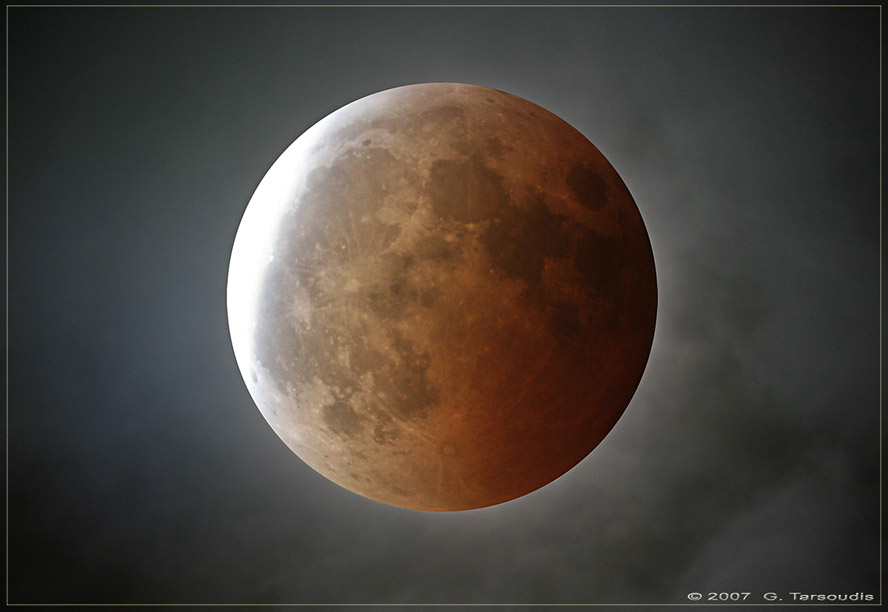eclipse image by George Tarsoudis, Greece
Within weeks we will begin the second golden age of lunar exploration. During the 14 months starting in September there will be four spacecraft launched to the Moon. This time three of the players will be from Asia. China plans to launch Chang’e in September, Japan has delayed its SELENE/Kaguya until perhaps October, and India and the USA will launch Chandrayaan and the Lunar Reconnaissance Orbiter in 2008. Finally, we will begin to see for the Moon the type of high resolution images, topo data and geochemic mapping that is now common for Mars. This should unleash a tremendous new wave of lunar understanding - if the data are widely released and funds are available to researchers for investigations. Another likely consequence is that there will be a deluge of publicity and excitement about the Moon, generating a grand opportunity to excite youth and the general public about the Moon and science in general. To prepare for this I have developed an online, team-taught, academic course about the Moon, the old and new eras of exploration, and educational activities. Unlike my previous online courses about lunar geology this has a much broader scope and although it is open to anyone its intended audience is teachers, planetarium and science center staff, science writers and any others who will need to explain what is hopefully being splashed across TVs and the Internet. The start date is September 24, and here are the details.
Technical Details
03/03/2007. LXD-75 8″ SC, Canon EoS 350d at prime focus with focal reducer f/6.3
COMMENTS?
Click on this icon File:PostIcon.jpg at the upper right to post a comment.




